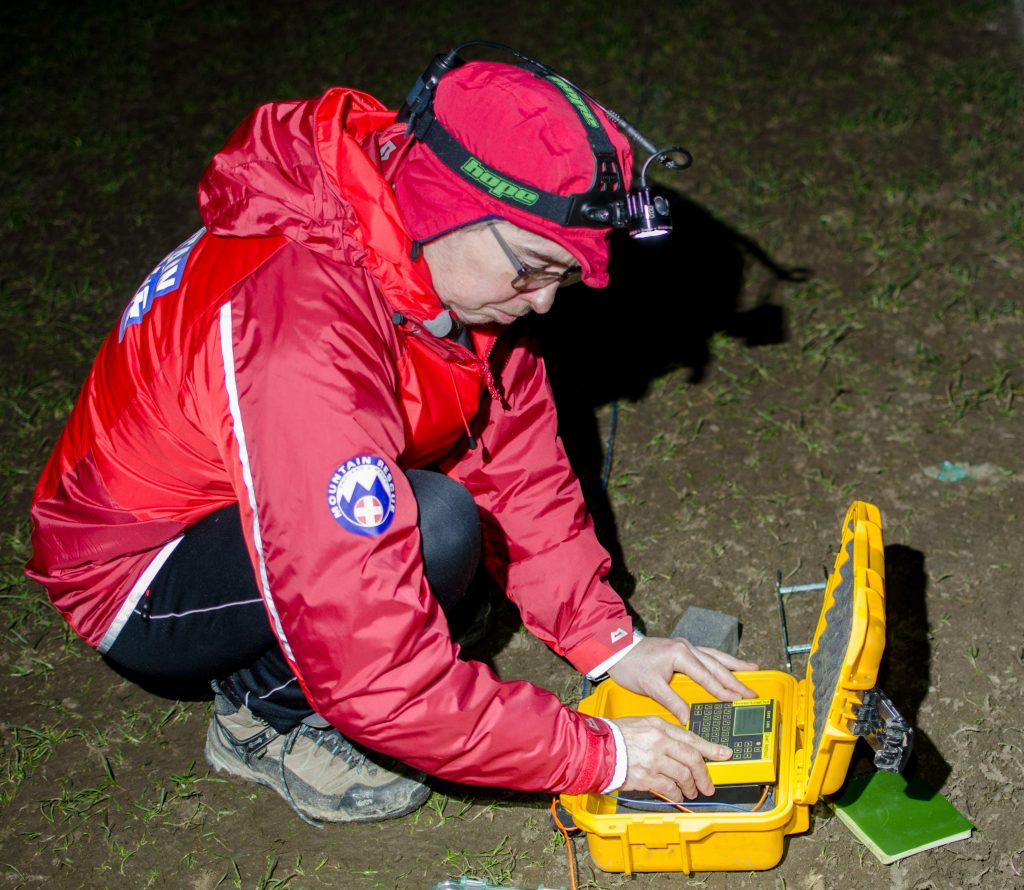Upper Wharfedale Fell Rescue Association is using a new communication system known as Cave-Link to help them on cave rescues.

Communications are a critical part of any underground rescue, and anyone who’s been involved on one will know the importance of good, reliable information on the state of the casualty and what’s going on in the cave or mine.
Originally, teams relied on sending runners in and out of the cave, carrying messages between the underground team and the surface controllers, but the deeper underground the incident, the harder this method of communication becomes, especially on a rescue where time is very much of the essence.
In the 1980s, underground communication were revolutionised by the introduction of the Molephone, a system that uses magnetic induction to transmit messages through solid rock. The Molephone and its various successors quickly became the principal method of communication for cave rescue teams. They were highly portable – even underground, didn’t need fixed wires and allowed instant communication with the surface team once the casualty had been located.
These devices did have their drawbacks, though, and could be temperamental. Mendip naturally had its own version, nicknamed the Grunterphone! I remember being given a crash course in the use of this in the 1990s on a rescue in Swildons, but on that occasion, the underground team were unable to establish a reliable connection, and we had to resort once again to runners.
Since the development of the Molephone and similar systems, several underground communications systems have been developed, initially the Hey phone and more recently the Nicola Phone, but one of the problems with this sort of system is that there have been few other uses for this type of equipment, and as a result, they have never become commercially available, leaving teams to be self-reliant for their manufacture and repair.
Underground Leader Rich Hudson from Harrogate explains the underground communications issues the team has had to cope with over the years: “Whilst radio communication has been around a long time for surface communications and has evolved in leaps and bounds through technological advancement, the same cannot be said for communication equipment with teams underground. Conventional radios do not work along underground passages or between the surface and the cave system below. In the earlier days it was a matter of having rescuers exiting the system to relay messages – clearly reducing the chances of a successful outcome. Eventually we managed to create our own underground phone system using old field telephones, this wasn’t ideal as the laying of telephone cable along the cave passages was difficult and the cables were always prone to damage and in any case such usage was only possible in certain caves,- and there are a lot of caves in the Dales – but it was the best we could do”.

However, the last few years have seen the emergence of a new system, Cave-Link, which has been developed in Europe. This has many similarities to the Molephone, it is portable and can transmit through rock, but communication is via text message rather than voice. Its advantages over the older systems are that it has greater range and the surface unit does not need to be directly over the underground unit to enable effective communication. As a result, one surface unit can transmit to several underground units placed at strategic points along the cave. For communication VLF (Very Low Frequencies) frequencies are used and the system has been tested on distances up to 1300 m but longer distances are believed to be possible. The greater range is of particular importance to the Upper Wharfedale team as they are on the limits of the old technology in at least one of the cave systems.
Andy Cole, UWFRA Communications Officer comments that: “Much depends on the rock geology. For instance, in the Dales we have a lot of mineral veins which severely restricts the range, but so far, Upper Wharefdale has tested Cave-Link with no problems at 250 m.” Andy says that Cave-Link is suitable for all the caving systems on their ‘patch’ although some may need more than one set on the surface due to the horizontal distances involved and aerial alignment but he doesn’t believe that will pose any operational issues for them,
The system is manufactured in Switzerland and is available from its makers who can be contacted via their website. UWFRA report that it is very straightforward to use but does require some pre-configuration back at base to set up unique IDs on each set.
In the field, the radios ‘chat’ to each other to determine the quality of the link, and then when a good connection has been established, the operator selects the station to send a message to and then types it in. the system is easy to use as it is based on a phone text messaging system. The big advantage of this system, according UWFRA, is its simplicity of use. The text-based system of communication makes for unambiguous reception, with no need to struggle against broken or noisy voice messages.
The underground set, including its aerial, fits into a medium sized Peli waterproof case. The units are self contained, with builti in rechargeable batteries whose life can measured in tens of days.
The Cave-Link system has been extensively tested underground and proven to work extremely well. The Upper Wharfedale Fell Rescue Association has now bought eight units at a cost of around £7,500. The purchase was made possible through the splendid fundraising efforts of the Friends of UFWRA.
Our correspondent, Linda Wilson, would like thank David Dennis and all his colleagues in UWFRA for all their help putting together this article.
